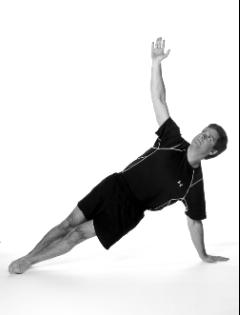I get this question often and my answer varies from one person to anther when it comes to this particular exercise. The Squat is probably one of the trickiest exercise to learn to do with proper technique.
Let’s first review what a squat is for those who are new to this exercise or have performed it but ended up with a sore back and legs as a result of doing them.
Start by bending your legs at the knees and hips, lowering your upper body between your legs, then reverse your direction to stand up straight again. Your upper body should remain fairly upright during the movement. (Note too many people bend too far forward when squatting, taking the pressure off the legs and placing it into the lower back)
Proper technique is the most important aspect when performing the squat. If done improperly you could injury yourself severely. Your back must maintain it’s natural curve during the exercise and not rounding your upper back forward or arching your lower back by excessively sticking out your hips during the movement, otherwise excess strain can be placed on the spine and cause serious injury.
There are many variations of the squat and these are the more common seen in the gym in one form or anther.
Olympic Squat- weight is held behind your head resting on your shoulders.
Front Squat – a weight, usually a barbell rests on your front shoulders.
Overhead Squat - squatting while pushing a weight overhead.
Why do Squats at all?
Benefits of the Squat. Every muscle works when you Squat: legs move the weight, your abs & lower back stabilize, upper-back stays tight, arms squeeze the bar, etc. The Squat is a full body exercise. So remember to use your core at all times while squatting.
Builds Muscle.
Leg Strength.
Hip Flexibility.
Knee Stability.
Before You Start. Lack of hip flexibility makes it impossible to Squat with proper technique. Stretch out first and perform body weight only squats starting with a chair placed behind you and squat down until you touch the chair with your glutes before returning to the upright position. Also doing the movement in front of a mirror will help you correct bad posture positions that you may have while squatting. Side Squats and Lunges are good options as well for warming up and improving your hip flexibility.
Part two I’ll explain about Tight Hamstrings, and how it forces your pelvis downwards resulting in rounding your back limiting your squatting and stressing your lower back too much and how to correct it.
Keep on training!

No comments:
Post a Comment